Negative and Positive Effects of 6 Sleeping Postures
The position in which we sleep, beyond being a preference or something we adopt without thinking, has an impact on our body and our health that goes beyond the number of hours we sleep. Not only can certain positioning cause cervical and lumbar discomfort but also the functioning of the intestine and even the premature formation of wrinkles — all of these areas are affected by the way we sleep.
5-Minute Crafts is showing you the 6 most popular sleeping positions and explaining the advantages and disadvantages of each of them.
1. Fetal position

Sleeping on your side with your knees slightly bent toward your chest is one of the most common sleeping positions. This makes sense if we take into account that it has been chosen by everyone in the mother’s womb. Besides being very comforting, this posture is beneficial in counteracting certain discomforts, but not so beneficial for others.
Advantages:
- Like all side positions, it’s best for combating insomnia and achieving continuous sleep.
- By choosing this position, we recreate the natural curve of the spine, so this generates relief from the more rigid and upright positions that we hold in our daily lives.
- During pregnancy, sleeping this way, and on the left side, improves blood circulation to the baby and prevents the uterus from pressing against the liver.
Disadvantages:
- An overly curved body can limit the space for the diaphragm and restrict breathing.
- It may generate some discomfort in the hip or lower back. To avoid this, it’s recommended that, if we adopt this posture, we place a pillow under the legs in order to relieve the pressure in that area.
2. Face up (or soldier position)
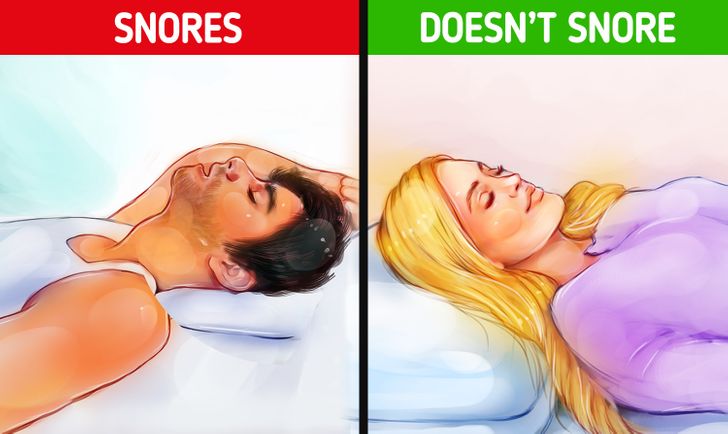
With the arms resting on the chest or on both sides of the body, those who lie down this way would be more likely not to change positions during the night or do so less often than those who choose other positions.
Advantages:
- As the spine is supported on the mattress, if the mattress and pillow are of good quality, it could be the best position to avoid neck, shoulder, and back pain.
- It’s the best position to avoid premature wrinkles. When we constantly rest our face on one side when sleeping and rub the pillow against it, we run the risk of developing wrinkles before it’s considered normal. Those who sleep on their backs can stay away from this possibility.
- If you have nasal congestion, lie on your back and raise your head and shoulders with 2 pillows. This will allow the sinuses to drain more easily to the back of the throat.
Disadvantages:
- This isn’t the right position for people who suffer from apnea or chronic snoring.
- While this can generate lumbar pain, it can be solved by placing a pillow or a rolled towel under the knees and a low pillow under the neck to maintain the spine’s natural curvature.
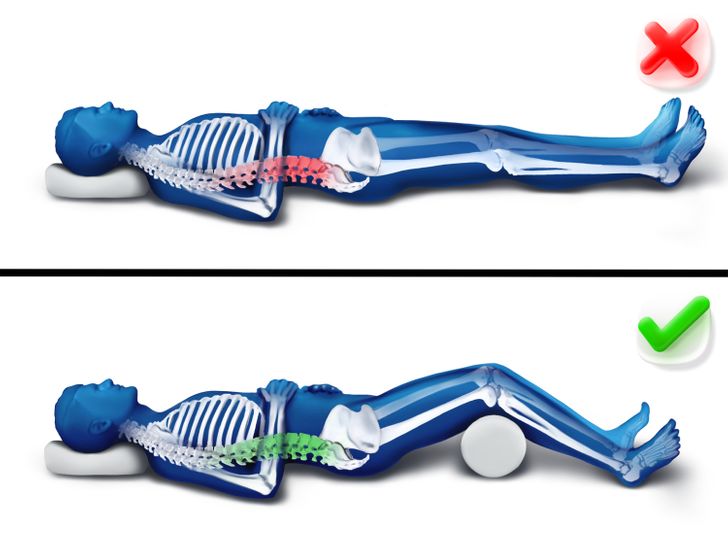
3. Face down (or freefall position)

This position has your face down, head turned to one side, and arms under or wrapped around a pillow. This position is also known as the “freefall.” However, many of those who adopt this position also consider it one of the least beneficial.
Advantages:
- It may help relieve apnea or chronic snoring.
Disadvantages:
- Sleeping this way can cause strain on the lower back, joints, and neck. For one, the spine flattens and doesn’t maintain its natural curvature. Second of all, having the head turned to one side all night long hinders the normal alignment of the spine with the neck.
- The discomfort generated by this position leads those who are used to this sleeping this way to wake up several times during the night. To avoid this as much as possible, it’s recommended to place a pillow under the hip and not use any pillow under the head.
4. Sideways
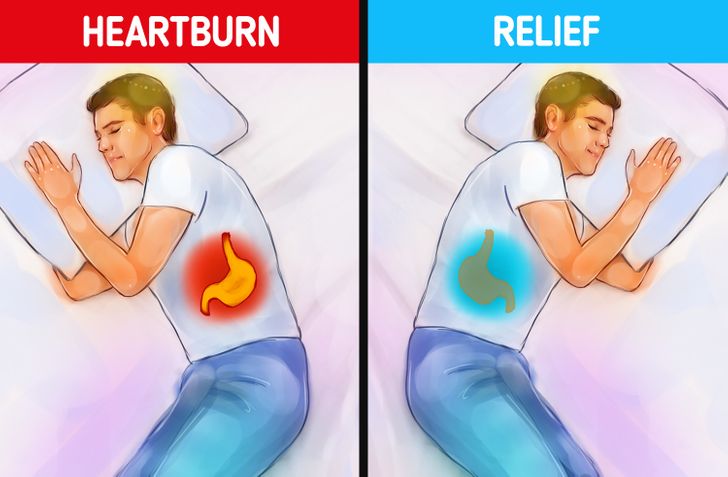
Advantages:
- Sleeping on the left side may help decrease heartburn. A study suggests that when we lie on this side, the stomach and its gastric juices remain lower than the esophagus. This would be the reason why the posture would alleviate the feeling of “fire in the pit of the stomach.”
- It reduces snoring or apnea by preventing the tongue from partially blocking the airway, which is something that can occur if we sleep on our backs.
Disadvantages:
- If the head is not supported correctly, it can generate neck pain. For this reason, it’s advised to use a thick pillow or 2 pillows.
- The arm may also suffer because all the weight of the body can fall on it. This can be remedied by placing a pillow underneath.
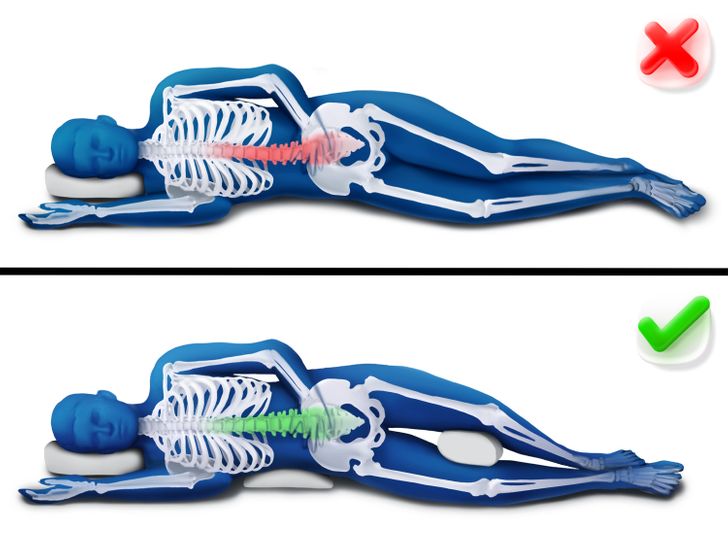
Tip: When sleeping on your side, place a pillow between your knees or a rolled towel or small pillow under your waist. This will help your body support your spine and keep it aligned.
5. Starfish
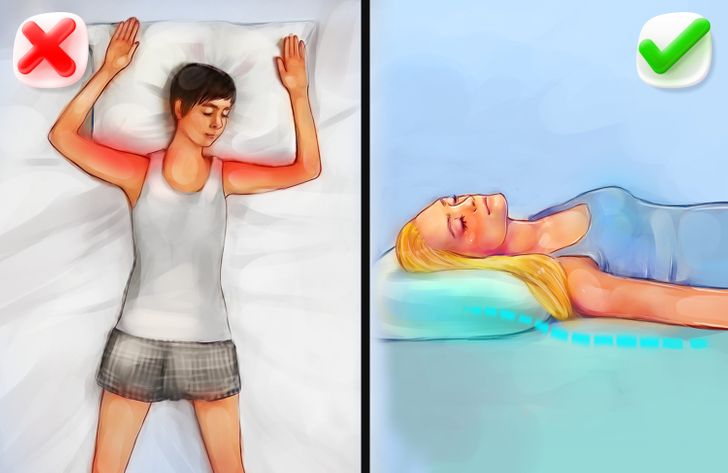
Sleeping face up with the arms up on both sides of the head has the same advantages and disadvantages as the soldier position. Only one more feature is added, which can be negative.
Disadvantages:
- Positioning the arms this way can cause pain and discomfort in the shoulders due to the pressure exerted on them.
6. Yearner position
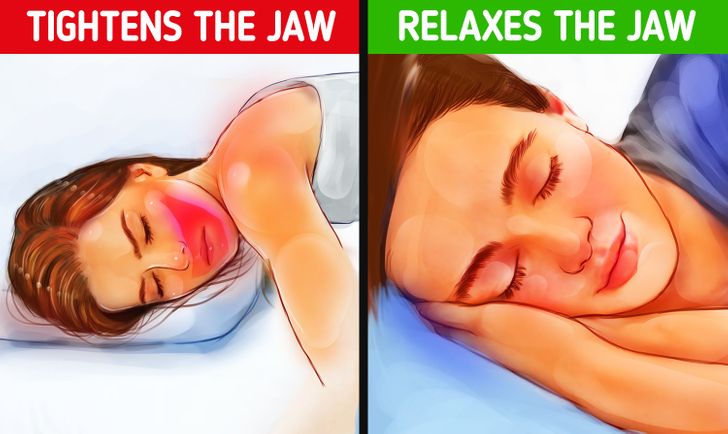
This position has the legs extended, or one slightly bent, and both arms extended in front of the body. Those who sleep this way have all the benefits of those who are inclined to sleep on their sides. In addition to the advantages and disadvantages we already know, there are other possible discomforts that can occur if we spend all night this way.
Disadvantages:
- Being well-stretched all night this way, the shoulders could experience some tension or discomfort. To avoid this, hugging a fluffy pillow may be the solution.
- Jaw discomfort can be generated in all variants of side positions, especially for those who clench the jaw when sleeping.